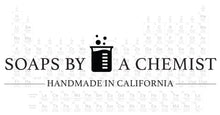FAQS
When/how did I learn to make soap?
In November 2018, I saw a friend post on social media that she had just made soap and I was curious to know how she did it. After doing some research online, buying some books, and watching youtube videos, I knew I could do it too with my chemistry background. After my first few batches, I was hooked. I created my own recipes, bought the ingredients, and here are my creations!
What is soap?
Soap is a cleansing agent created by the chemical reaction of a fatty acid with an alkali metal hydroxide. Chemically speaking, soap is a salt composed of an alkali metal, such as sodium or potassium, and a mixture of "fatty" carboxylic acids. Hard bars of soap are made from oils and butters which are the fats mixed with sodium hydroxide also known as lye. This chemical reaction is known as saponification and creates glycerol and fatty acid salts, called “soap.”
What are parabens and phthalates and are your products free of them?
Parabens are common preservatives found in lotions, shampoos, body wash and many cosmetics. They are endocrine disruptive chemicals which are absorbed into the bloodstream and affect many of our body's natural functions. "Phthalates are a group of chemicals used to make plastics more flexible and harder to break. They are often called plasticizers. Some phthalates are used as solvents (dissolving agents) for other materials. They are used in hundreds of products, such as vinyl flooring, adhesives, detergents, lubricating oils, automotive plastics, plastic clothes (raincoats), and personal-care products (soaps, shampoos, hair sprays, and nail polishes)."-cdc.gov Phthalates are also linked to endocrine disruption and reproductive toxicity. These have been banned from cosmetics in the European Union, but remain prevalent in U.S. products. All of my products are free of both of these harmful chemical substances.
What is the cold process method?
Cold process just means that no external heat source is applied during the soap making process. In contrast, hot process soap is made in a crockpot or on the stovepot to ensure the soap passes through all stages of saponification in a shorter amount of time. For cold process, I melt my oils on the stovetop first, add my lye water, mix with an emulsion blender, add fragrance and/or colorants, and pour into molds. Then I wait 24-36 hours before unmolding and cutting. Then the soaps cure on my shelves for 4-6 weeks before being sent to customers.
How do I know when you will have new soaps?
Follow me on Instagram @soapsbyachemist or facebook @soapsbyachemist to see my newest creations or to know the latest updates for soap parties, events, and shop updates.
Do you do custom orders?
Yes, if I have time, so please contact me with your request and know that it takes a minimum of 5-6 WEEKS before they can be shipped to you because soap takes time to cure after being made.
How do I take care of my handmade soaps?
- Use a soap dish or rack that offers plentiful drainage to ensure the soap can dry between uses.
- Store soaps in cool, dry location that allows for air circulation. Natural soaps contain glycerin as a product in the chemical reaction of oils and lye; glycerin is hygroscopic, meaning it can attract moisture from the air and the soaps may appear to “weep”. Glycerin contains three hydrophilic hydroxyl groups which are responsible for its solubility in water and hygroscopic nature.
- The older the soap bar is, the better the soap becomes. Although the fragrance/scent may fade overtime, the soap itself will become better with age. Best to use within 1 year for best scent retention.
- Keep soap stored out of direct sunlight: natural ingredient colors may fade.
- To store several soaps, it’s best to store similar scents together as some scents may overpower others.
